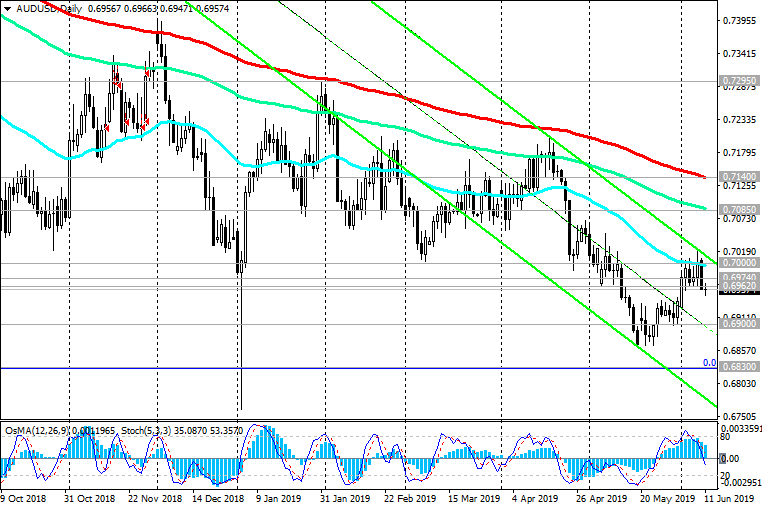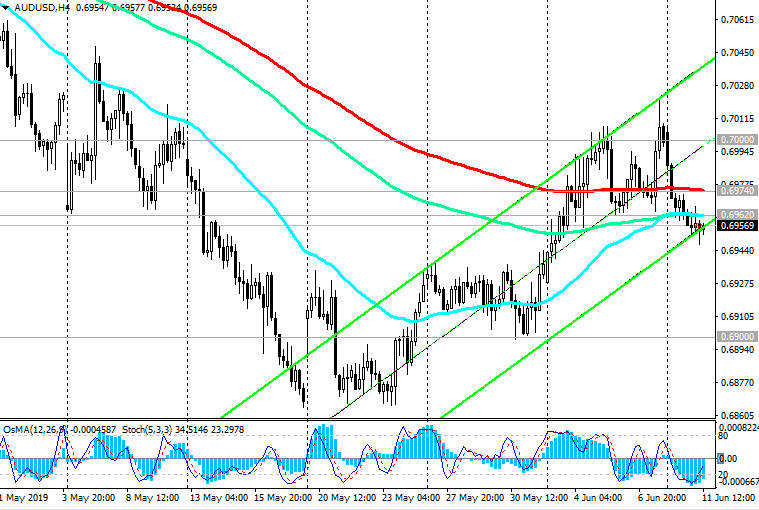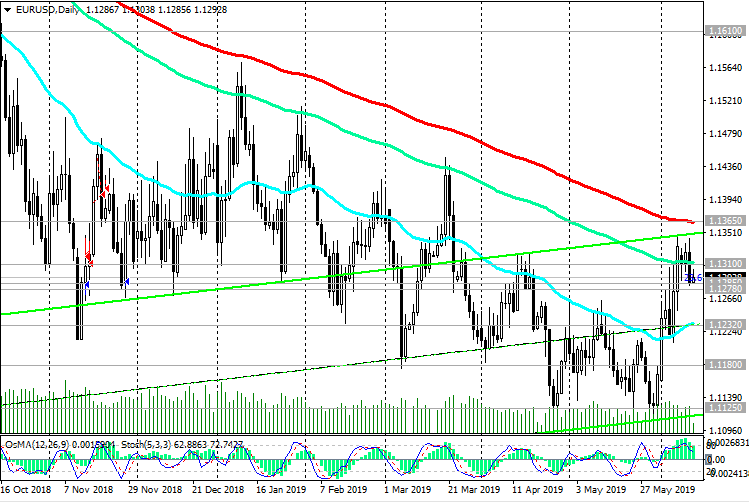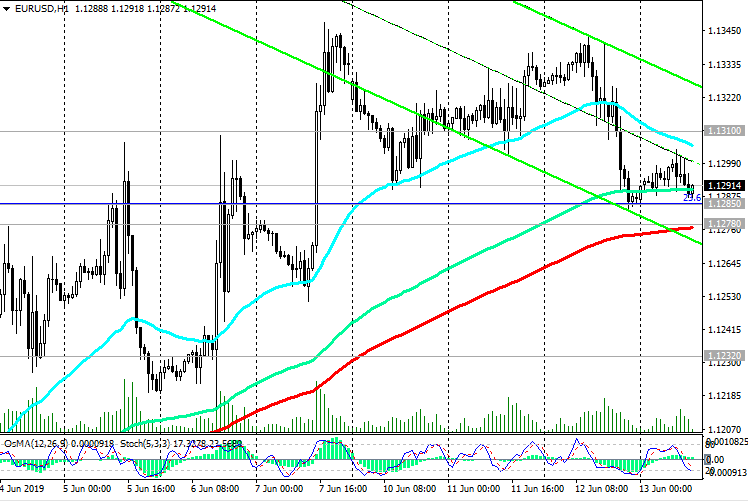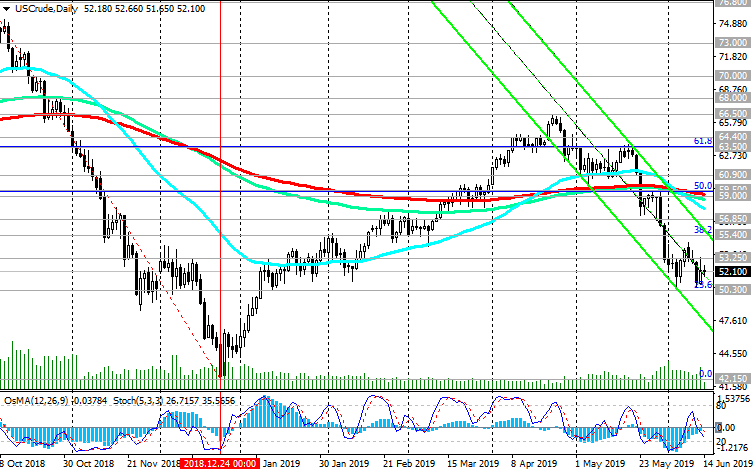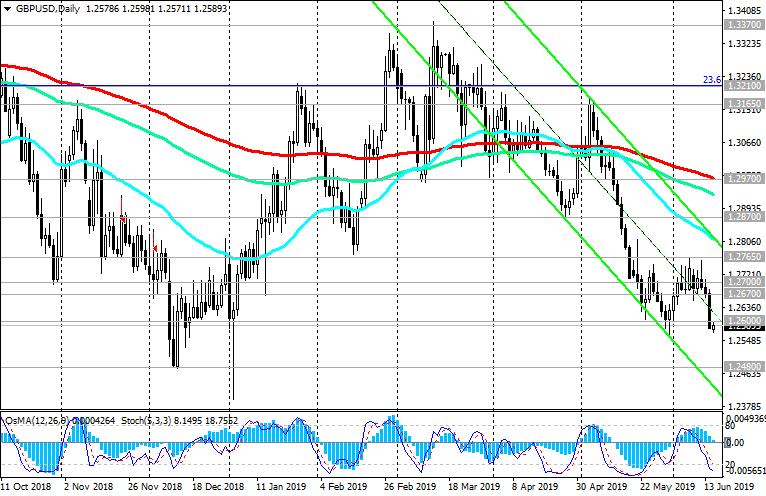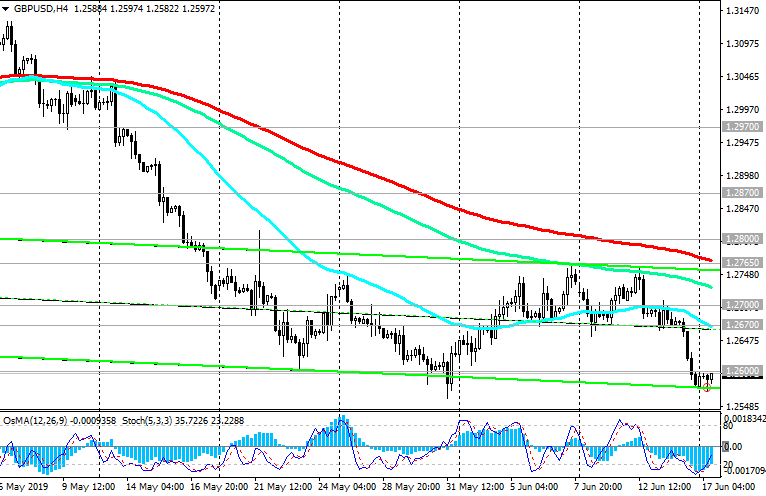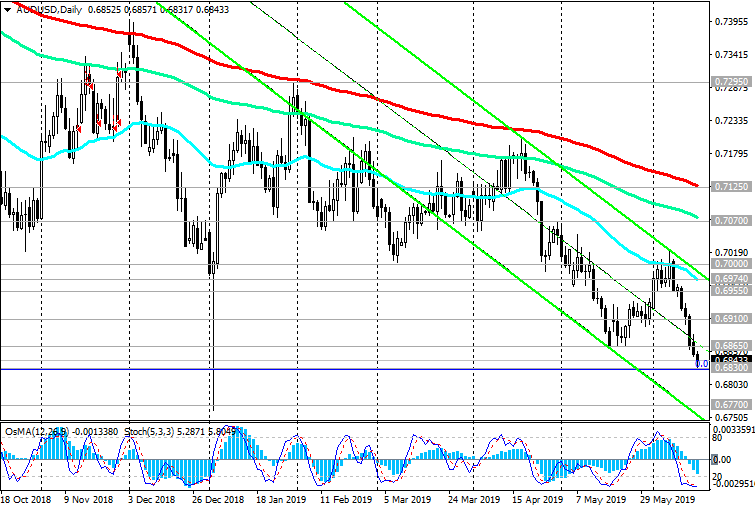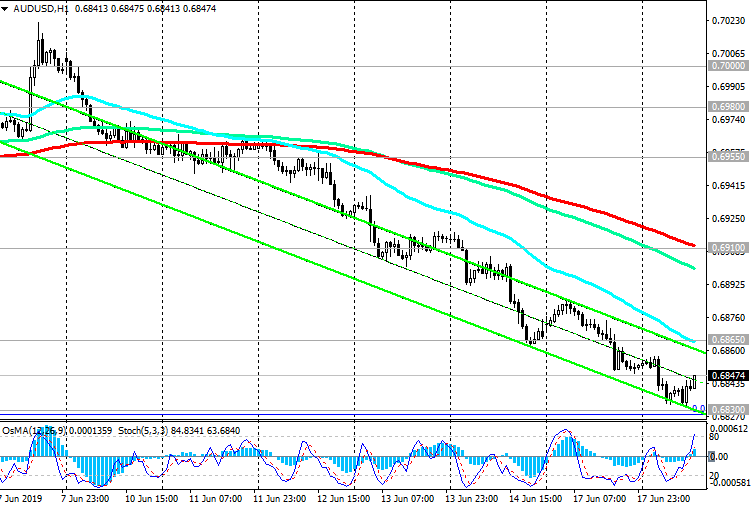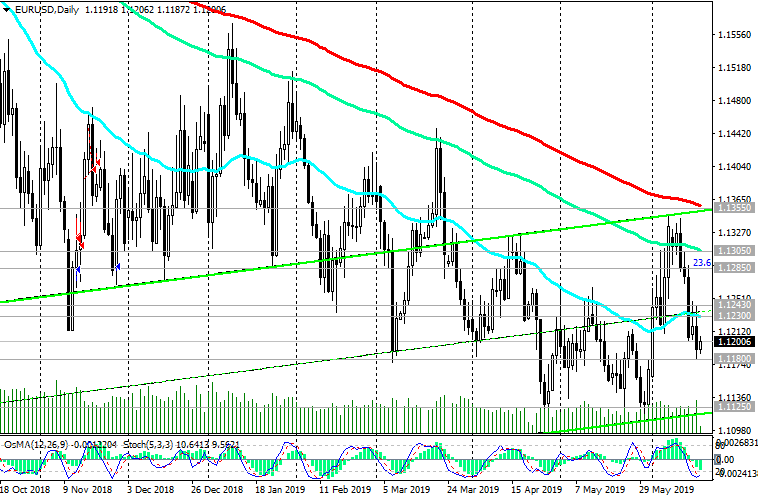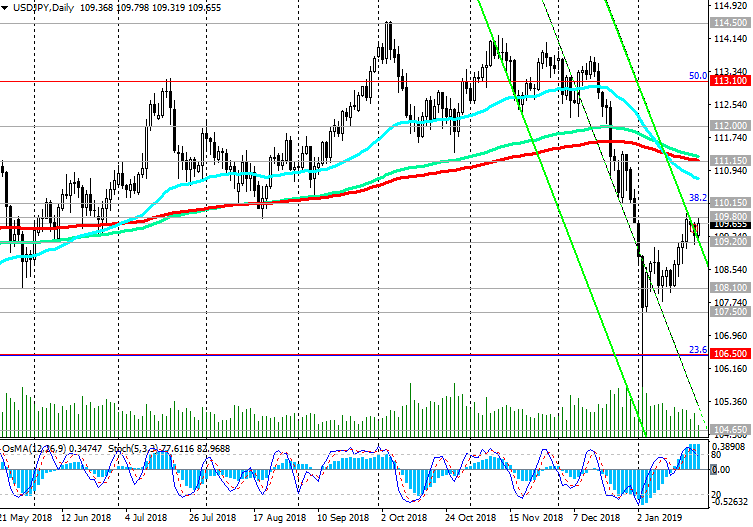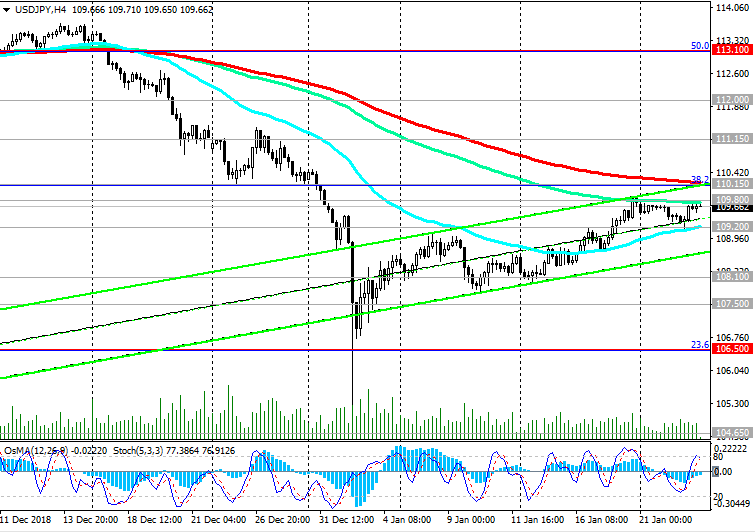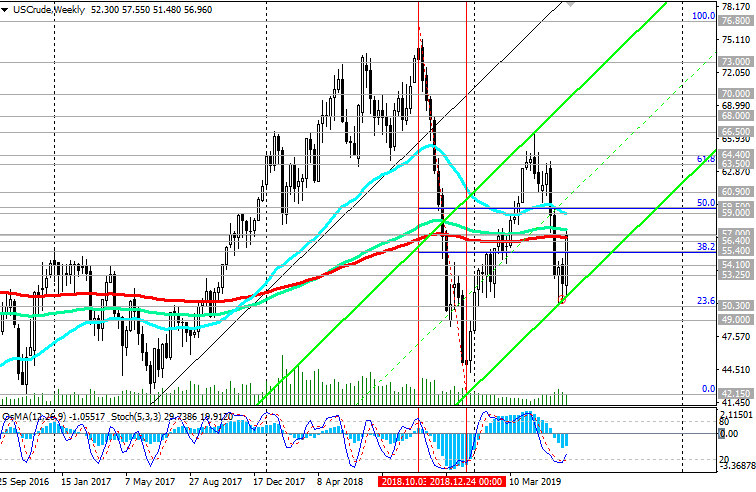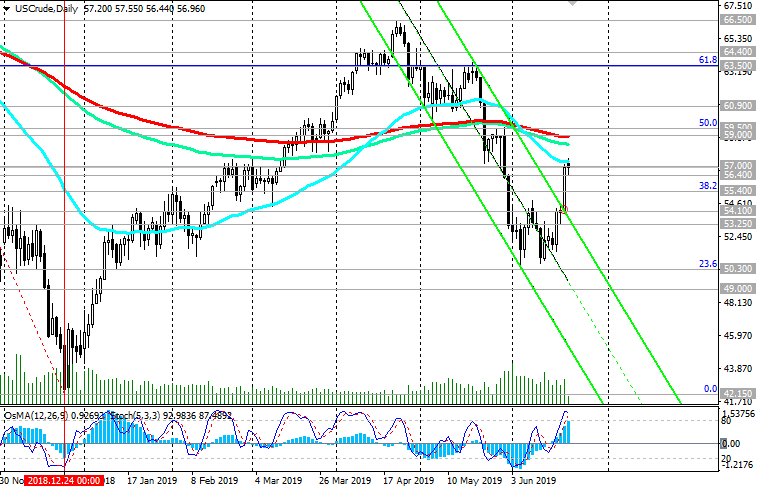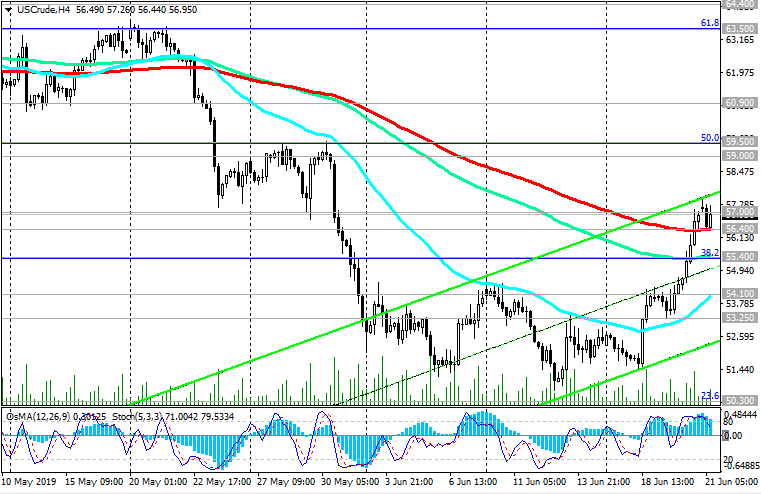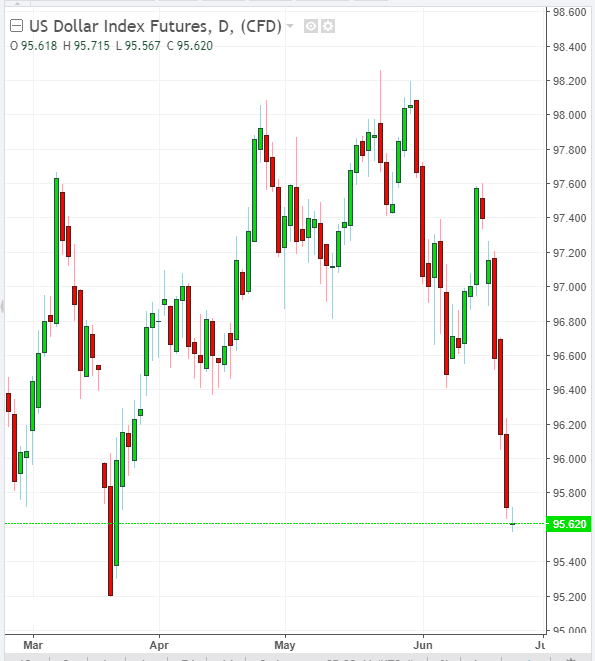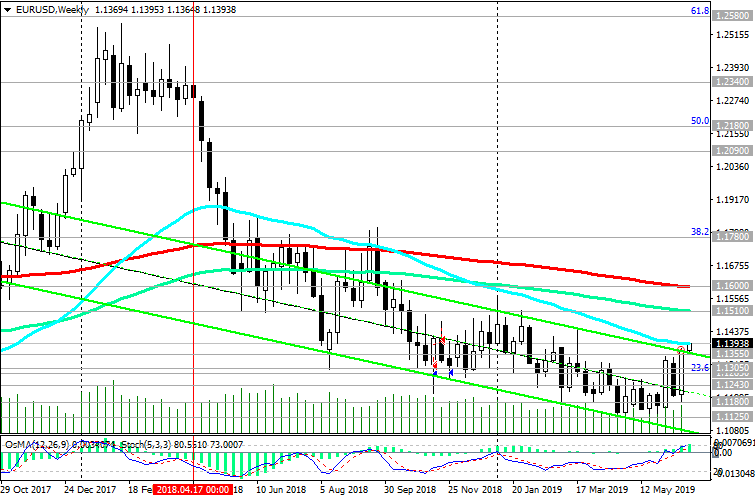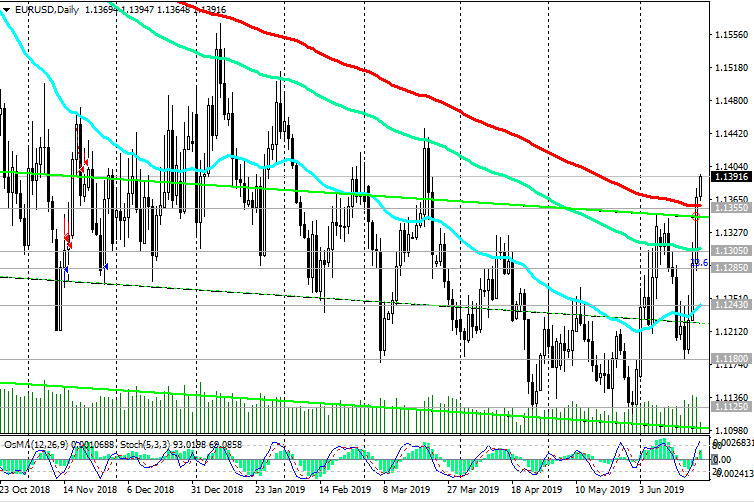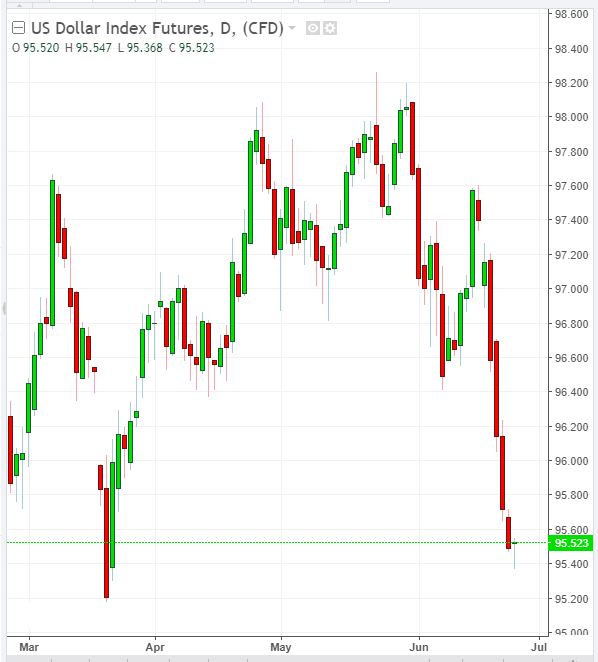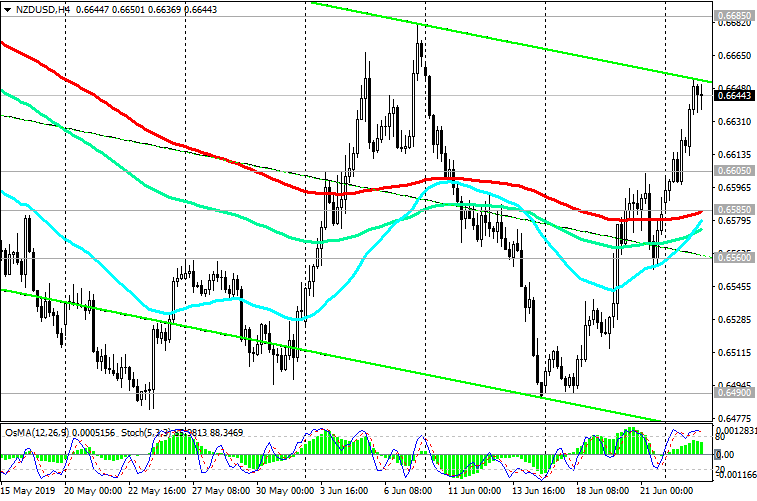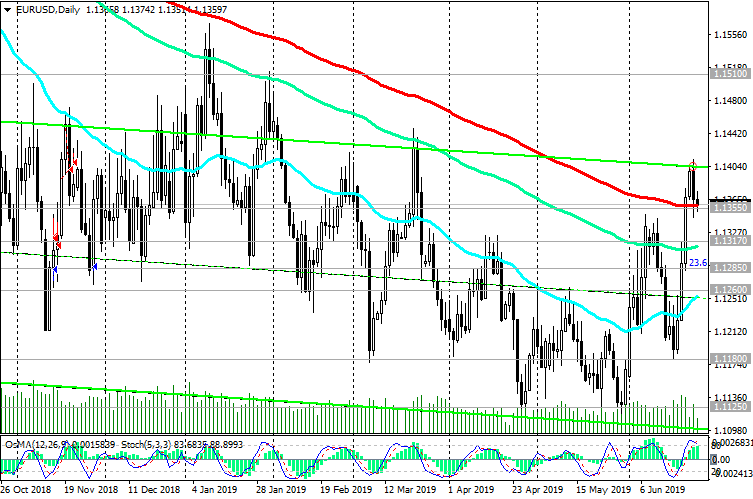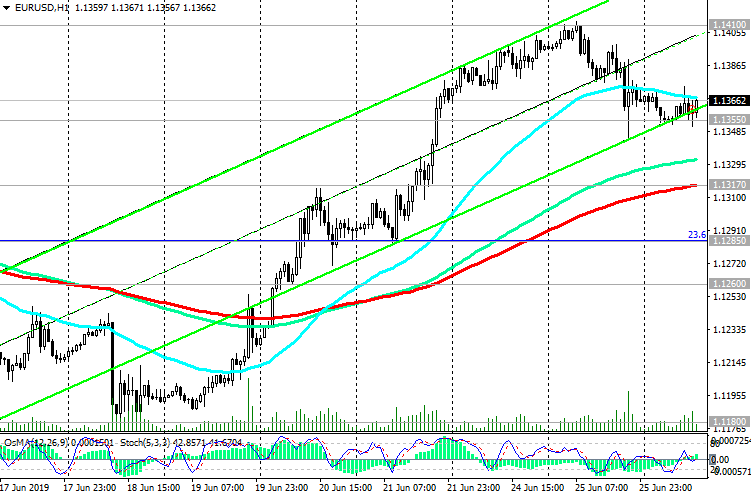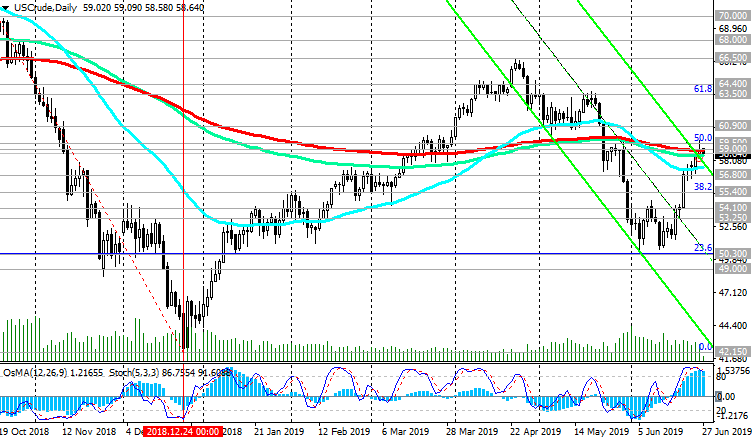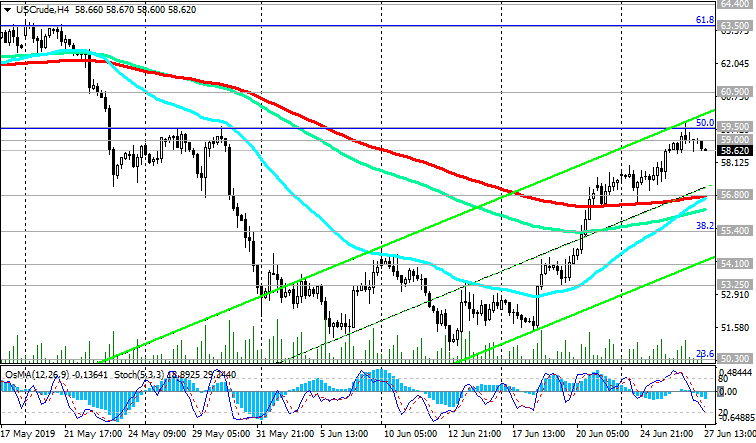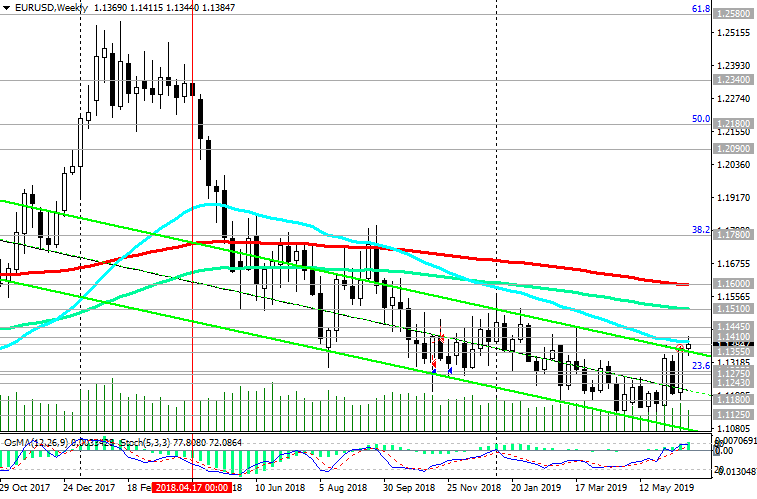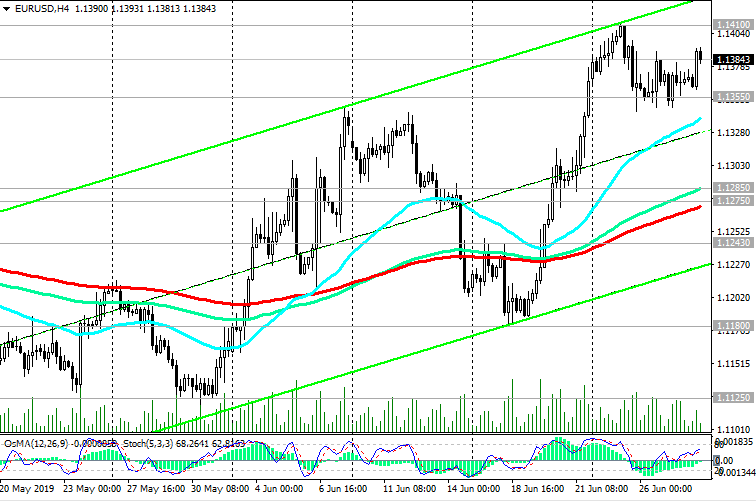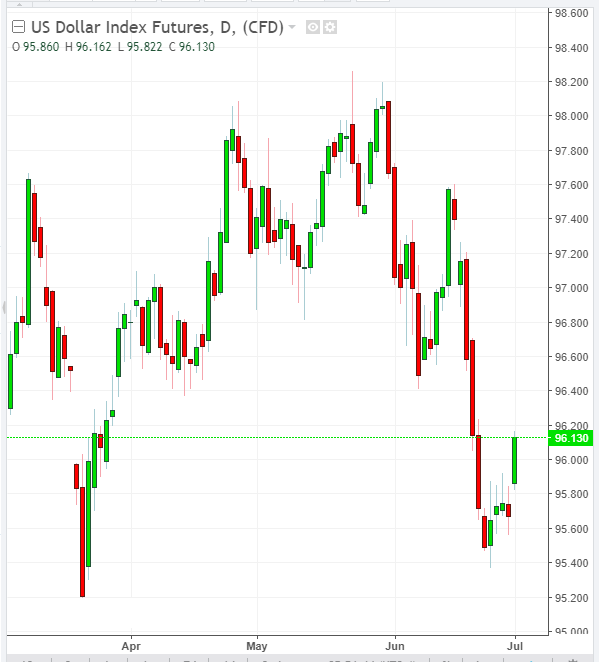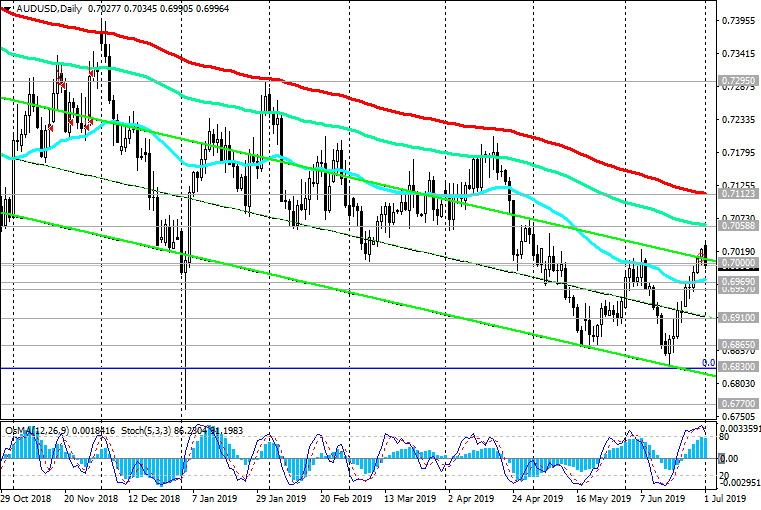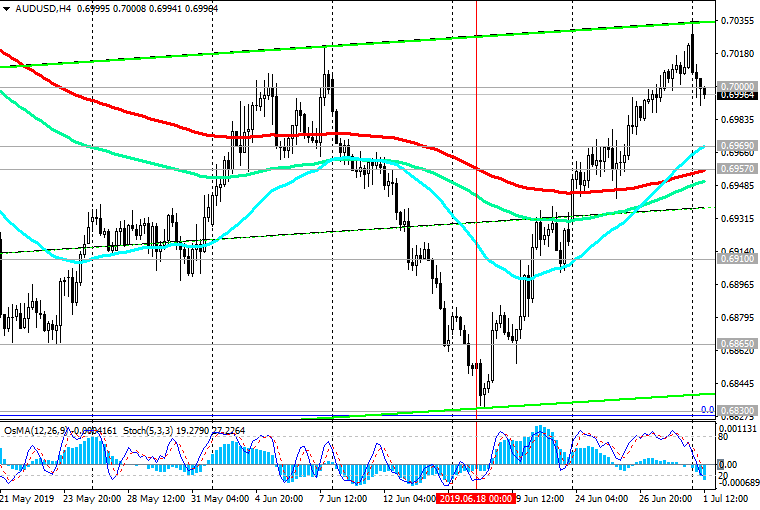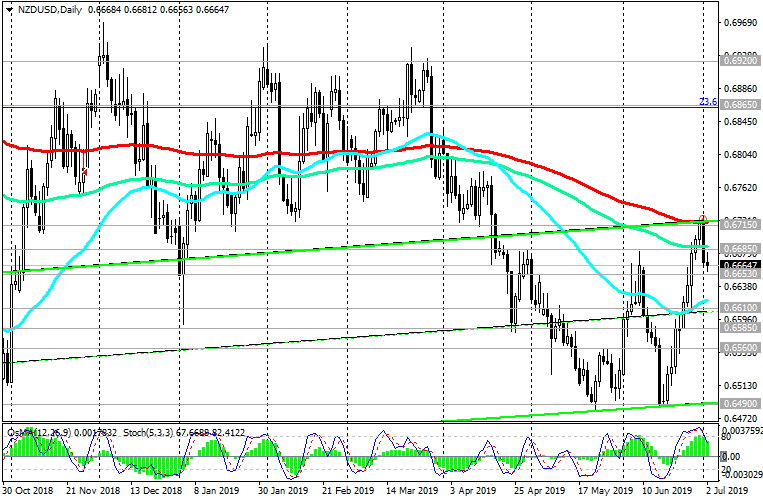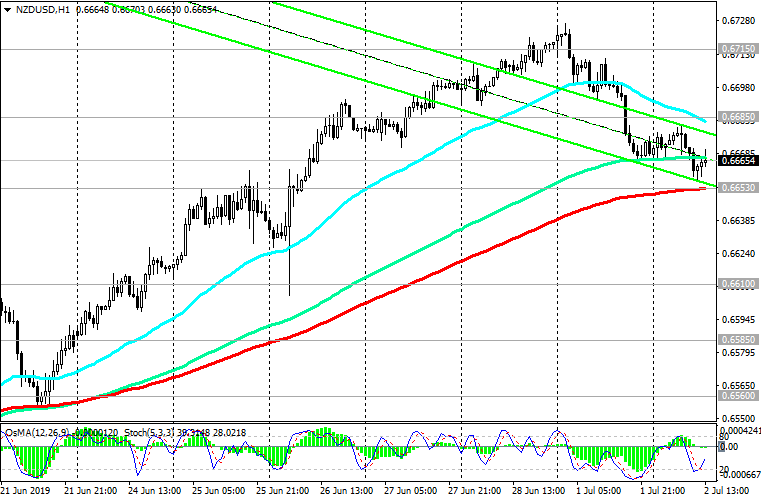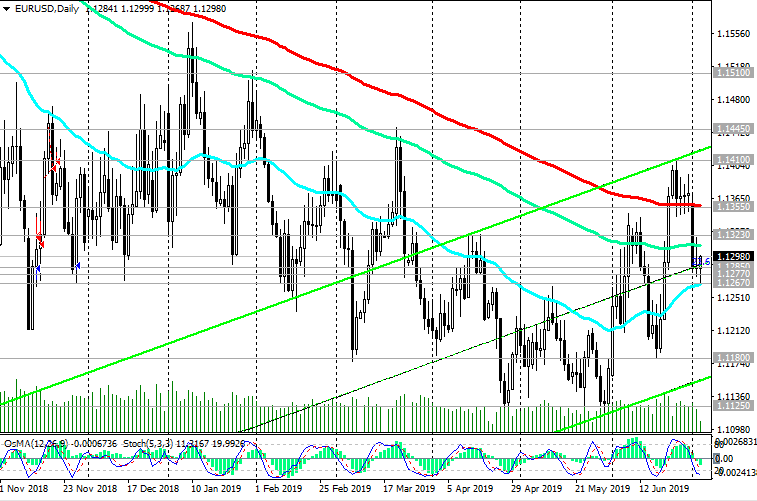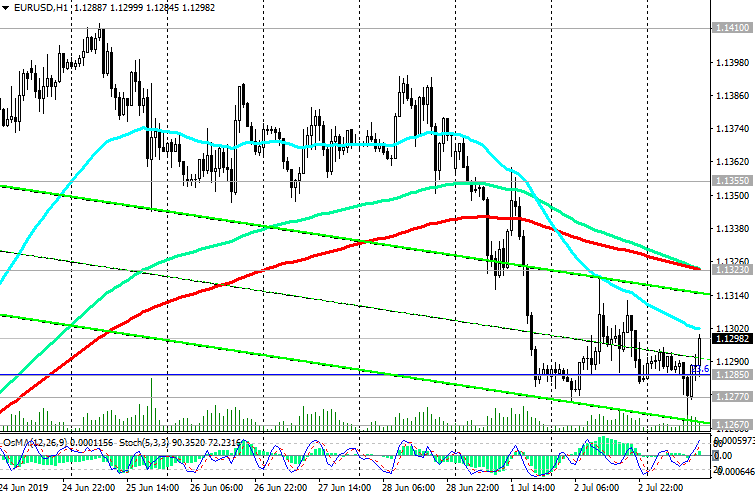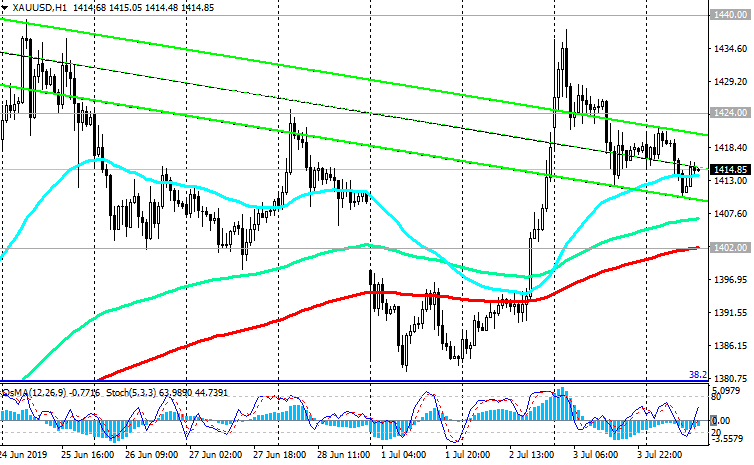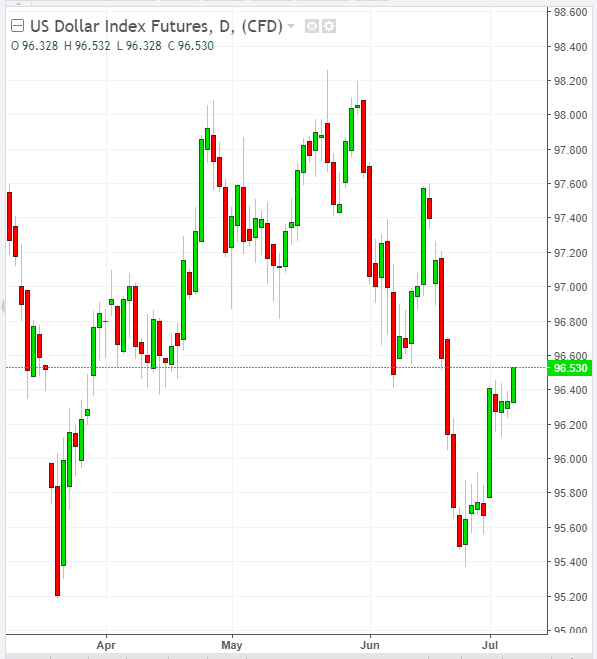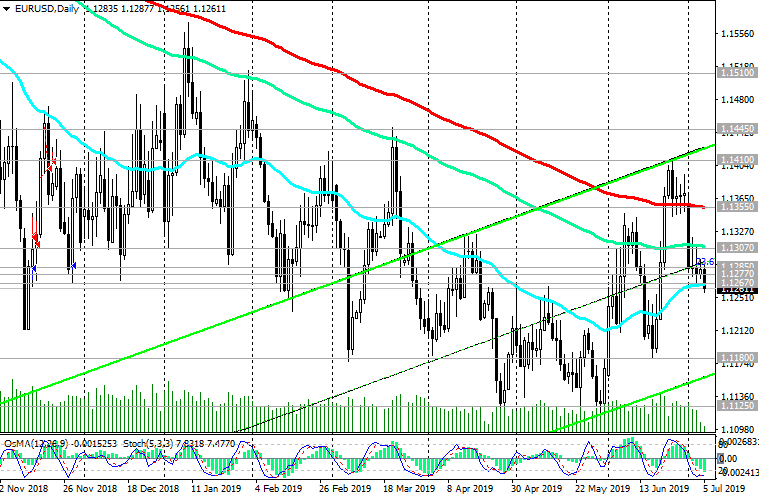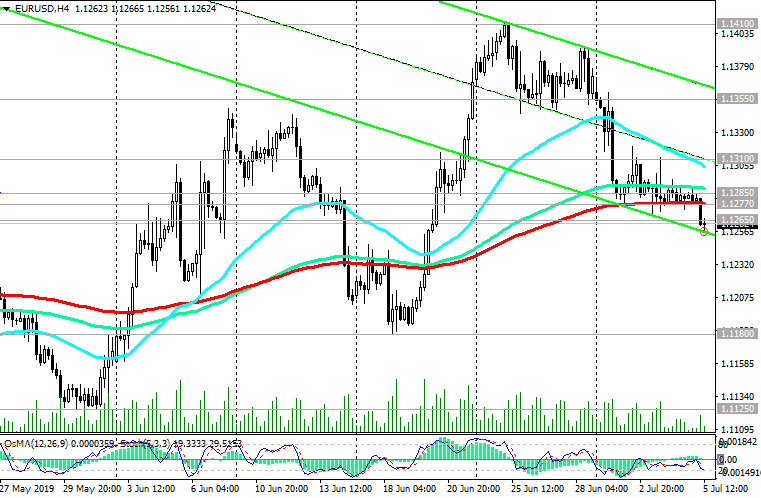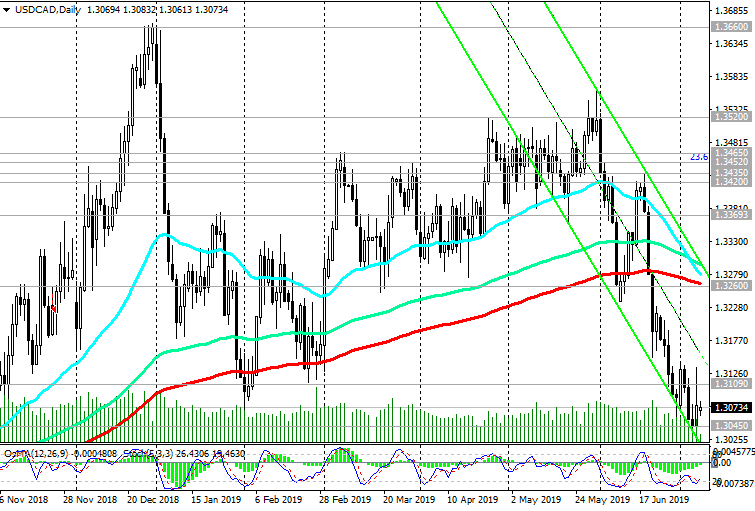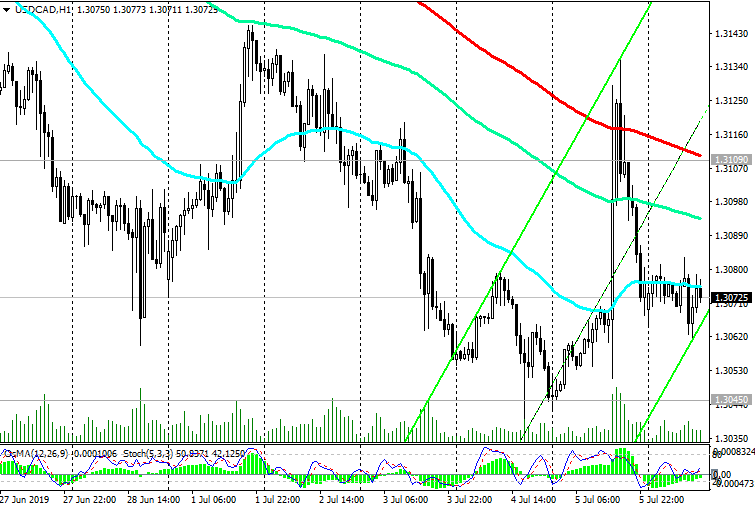TifiaFX
Established member
- Messages
- 641
- Likes
- 0
S&P500: Current Dynamics
10/06/2019
US stocks indices rose from the opening of today after last Friday they ended the week as one of the best weeks in the last 6 months. DJIA added 4.7%, S&P500 - 4.4%, and Nasdaq - 3.9%.
The heightened expectations of the Fed's policy easing led to an increase in US stock indices, which continued to recover from a sharp drop last month amid growing risks of escalating international trade wars.
Fed Chairman Jerome Powell said last Tuesday that the Fed "will act according to the need to maintain growth". The worsening economic outlook strengthens the pressure on the Fed leadership towards easing monetary policy, which leads to an increase in US stock indices.
At the beginning of the European session, S&P500 futures traded near the 2884.0 mark, above the important short-term support level of 2840.0 (ЕМА50 on the daily chart, ЕМА200 on the 4-hour chart).
Above key support levels of 2810.0 (Fibonacci level 23.6% of the correction to the growth since December 2018 and the level of 2335.0), 2800.0 (EMA144), 2781.0 (EMA200 on the daily chart), the bullish trend prevails.
The signal for the resumption of sales will be the return of the S&P500 to the zone below the support level of 2840.0. After the breakdown of the key support level of 2781.0, the targets for further reduction of the S&P500 will be the support levels of 2720.0 (Fibonacci 38.2%), 2645.0 (Fibonacci 50%), 2510.0 (ЕМА200 on the weekly chart).
Support Levels: 2858.0, 2840.0, 2810.0, 2800.0, 2781.0, 2720.0, 2645.0, 2573.0, 2507.0
Resistance Levels: 2915.0, 2937.0, 2959.0
Trading recommendations
Sell Stop 2856.0. Stop Loss 2910.0. Objectives 2840.0, 2810.0, 2800.0, 2781.0, 2720.0, 2645.0, 2573.0, 2507.0
Buy Stop 2910.0. Stop Loss 2856.0. Objectives 2915.0, 2937.0, 2959.0
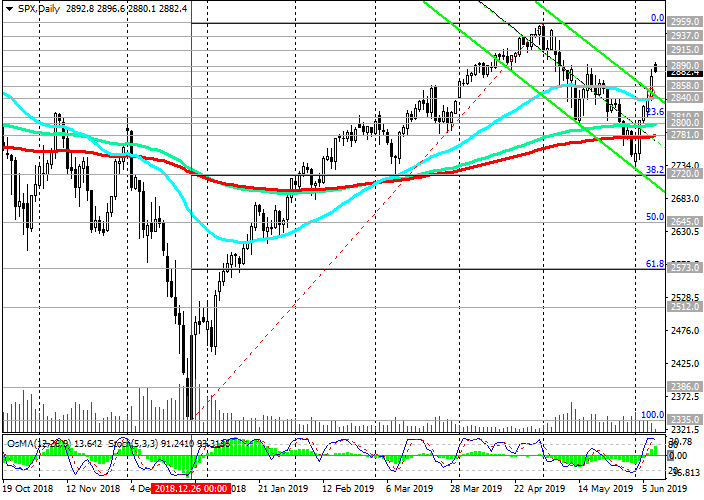
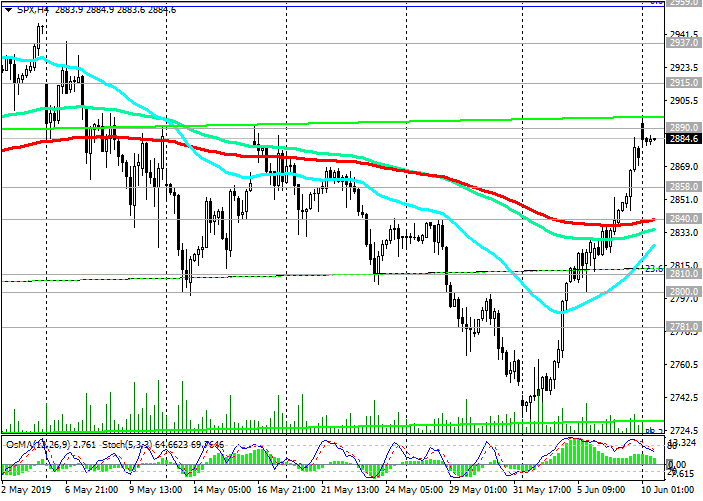
10/06/2019
US stocks indices rose from the opening of today after last Friday they ended the week as one of the best weeks in the last 6 months. DJIA added 4.7%, S&P500 - 4.4%, and Nasdaq - 3.9%.
The heightened expectations of the Fed's policy easing led to an increase in US stock indices, which continued to recover from a sharp drop last month amid growing risks of escalating international trade wars.
Fed Chairman Jerome Powell said last Tuesday that the Fed "will act according to the need to maintain growth". The worsening economic outlook strengthens the pressure on the Fed leadership towards easing monetary policy, which leads to an increase in US stock indices.
At the beginning of the European session, S&P500 futures traded near the 2884.0 mark, above the important short-term support level of 2840.0 (ЕМА50 on the daily chart, ЕМА200 on the 4-hour chart).
Above key support levels of 2810.0 (Fibonacci level 23.6% of the correction to the growth since December 2018 and the level of 2335.0), 2800.0 (EMA144), 2781.0 (EMA200 on the daily chart), the bullish trend prevails.
The signal for the resumption of sales will be the return of the S&P500 to the zone below the support level of 2840.0. After the breakdown of the key support level of 2781.0, the targets for further reduction of the S&P500 will be the support levels of 2720.0 (Fibonacci 38.2%), 2645.0 (Fibonacci 50%), 2510.0 (ЕМА200 on the weekly chart).
Support Levels: 2858.0, 2840.0, 2810.0, 2800.0, 2781.0, 2720.0, 2645.0, 2573.0, 2507.0
Resistance Levels: 2915.0, 2937.0, 2959.0
Trading recommendations
Sell Stop 2856.0. Stop Loss 2910.0. Objectives 2840.0, 2810.0, 2800.0, 2781.0, 2720.0, 2645.0, 2573.0, 2507.0
Buy Stop 2910.0. Stop Loss 2856.0. Objectives 2915.0, 2937.0, 2959.0



